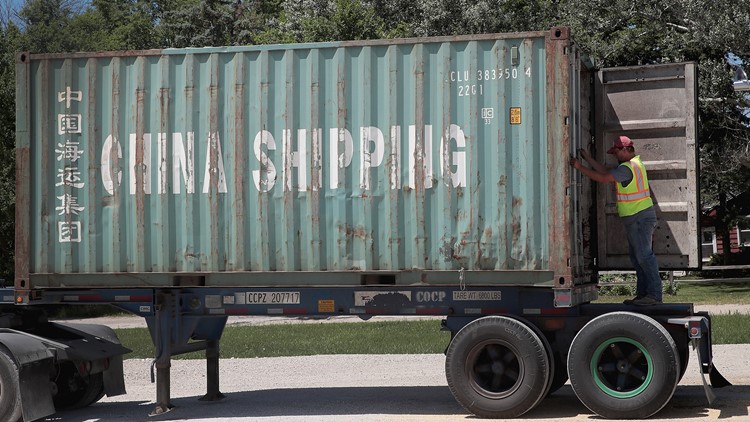As President Donald Trump threatens China with another $200 billion in tariffs, some U.S. industries are still assessing the damage from China's retaliatory levies from the first round.
That round amounted to $34 billion in tariffs in a tit-for-tat trade war between the two nations. China targeted a range of commodities that went heavy on agricultural and seafood products, along with U.S.-made cars.
But where did the tariffs hit hardest around the country? Just as certain states took bigger hits, so did some counties. Generally, those counties likely to see the biggest percentage of their workforce impacted by the tariffs are those with small populations and a high level of dependency on a single industry, from chicken parts to construction machinery manufacturing.
Here is a Brookings Institution analysis of the top 15 counties listed by share of local jobs in impacted industries in 2017 that could face harder times because of the tariffs:
Aleutians East Borough, Alaska
Number of jobs affected: 1,891
Share of local employment: 78.4%
Seafood product prep and packaging
Sargent County, North Dakota
Number of jobs affected: 1,837
Share of local employment: 63.1%
Construction machinery mfg.


Bristol Bay Borough, Alaska
Number of jobs affected: 626
Share of local employment: 51.9%
Seafood product prep and packaging
Aleutians West Census Area, Alaska
Number of jobs affected: 1,769
Share of local employment: 51%
Seafood product prep and packaging
Parmer County, Texas
Number of jobs affected: 2,535
Share of local employment: 43.5%
Animal (except poultry) slaughtering
Colfax County, Nebraska
Number of jobs affected: 2,172
Share of local employment: 41.8%
Animal (except poultry) slaughtering
Dixon County, Nebraska
Number of jobs affected: 709
Share of local employment: 41%
All other misc. food mfg.


Scott County, Mississippi
Number of jobs affected: 5,664
Share of local employment: 41%
Poultry processing
Bladen County, North Carolina
Number of jobs affected: 5,036
Share of local employment: 39%
Animal (except poultry) slaughtering
Dooly County, Georgia
Number of jobs affected: 1,389
Share of local employment: 37.7%
Poultry processing
Power County, Idaho
Number of jobs affected: 1,226
Share of local employment: 37.5%
Frozen fruit, juice, and vegetable mfg.
Evans County, Georgia
Number of jobs affected: 1,681
Share of local employment: 37.5%
Poultry processing
McDonald County, Missouri
Number of jobs affected: 2,638
Share of local employment: 37.3%
Poultry processing
Morrow County, Oregon
Number of jobs affected: 2,072
Share of local employment: 35.8%
Frozen fruit, juice, and vegetable mfg.
Carroll County, Indiana
Number of jobs affected: 1,835
Share of local employment: 35.8%
Animal (except poultry) processing
Three out of five of the most affected counties on the list are in Alaska, a reflection of how dependent some counties are on the seafood industry, which is being hit hard by tariffs.
China sells more to the U.S. than the U.S. sells to China. That narrows China's options in finding U.S.-made products on which to levy tariffs. As such, U.S. agricultural products became a big target.
“It would be hard for China to match U.S. tariffs without touching agricultural products,” Paul Armstrong-Taylor, professor of economics at the Hopkins-Nanjing Center.



